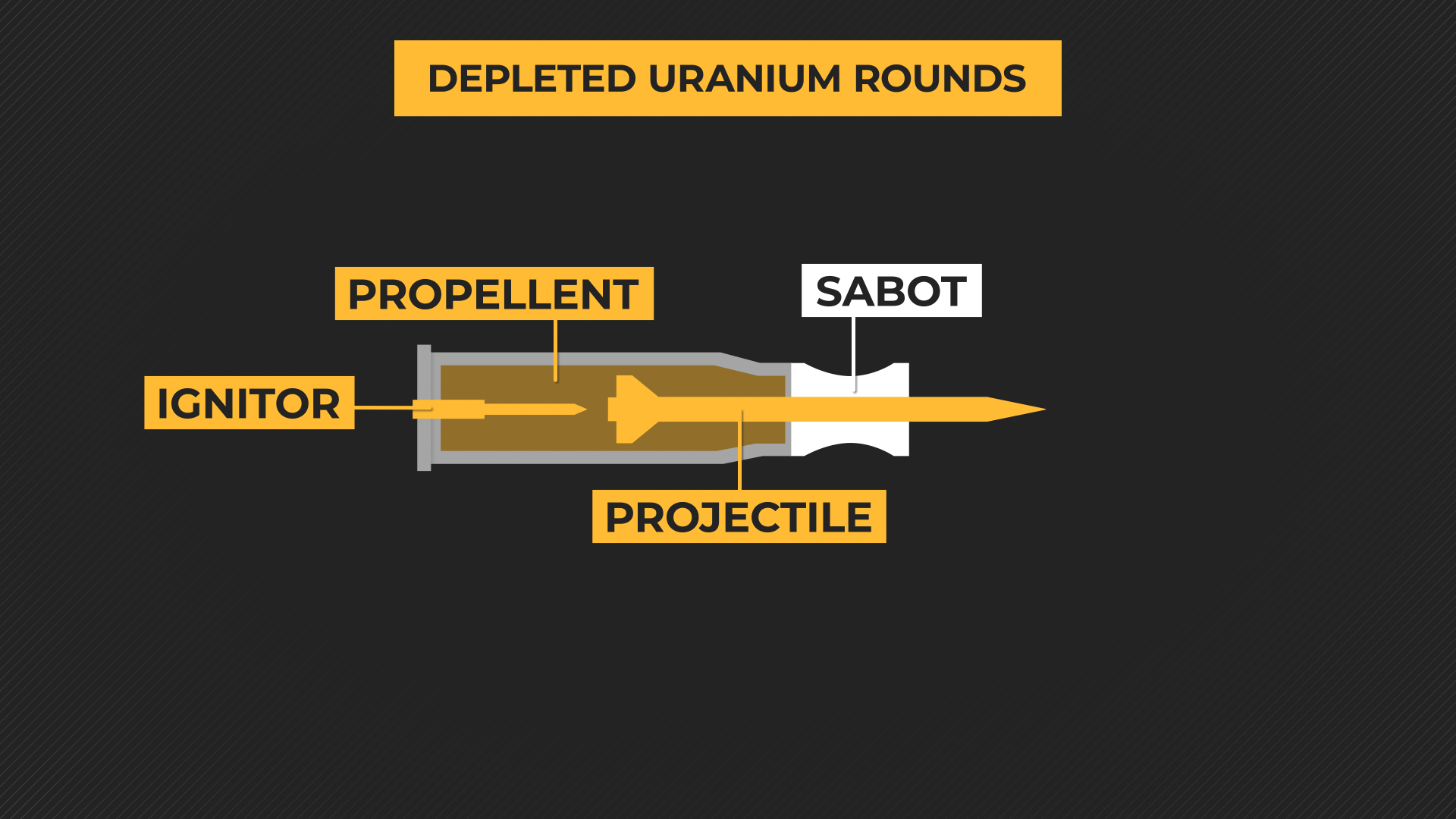Abrams tanks aren’t even in Ukraine yet, and Russia is already giving the United States flak about the type of ammunition the tanks will shoot. During the week of Sept. 3, the U.S. said it would supply depleted uranium (DU) rounds to Ukraine’s Armed Forces. The U.K. already gave Ukraine DU rounds back in March.
Depleted uranium is a by-product of making enriched uranium, which is used in nuclear reactors and weapons. But depleted uranium is exactly that — depleted. It’s less radioactive than the naturally occurring material.
Depleted uranium is also dense. Extremely dense. Which is why countries like the U.K., the U.S. and Russia started using it for weapons and armor decades ago.
So, how exactly do depleted uranium rounds work?

DU rounds — like other conventional munitions — contain a projectile, propellent and an ignitor. DU rounds also have sabots to stabilize the main projectile.
Once fired, the projectile becomes a super-heated metal dart that doesn’t dent on impact. Instead, the dense depleted uranium stays sharp to pierce armored vehicles. When that happens, shards of the vehicle’s own armor fly through the interior with lethal velocity. Depleted uranium also ignites when exposed to oxygen. So, the projectile can cause a fire inside enemy vehicles, cooking off whatever ammunition or fuel is inside.
Russia is already losing more armor in Ukraine than it can make. Once Ukraine starts launching DU sabot rounds from Abrams tanks — arguably some of the best tanks ever made — the number of Russian armored vehicles lost to the scrap pile will no doubt increase.
For all their effectiveness on the battlefield, DU rounds don’t come without controversy.
Critics say the DU rounds may be less radioactive than naturally occurring uranium, but they are still radioactive and can cause cancer.
The U.S. military studied the claims and said there is no proof depleted uranium has led to a spike in cancer among its troops. The United Nations said while not a bomb, there are still risks with depleted uranium. The International Atomic Energy Agency said DU is mainly a toxic chemical, and troops who handle the material should wear protective apparel like gloves.
The Kremlin’s spokesman, Dmitry Peskov, said the U.S. giving Ukraine depleted uranium was “very bad news.” Peskov claimed the U.S. using DU rounds in the former Yugoslavia led to a “galloping rise” in cancers and other illnesses in the area.
When the U.K. gave Ukraine DU rounds earlier this year, Russia responded by putting nuclear weapons in Belarus. Putin said he was responding accordingly since “the collective West is starting to use weapons with a ‘nuclear component.’”
DU isn’t always used for its offensive capabilities though. During Operation Desert Storm, the U.S. outfitted its Abrams tanks with depleted uranium armor. Not a single tank was penetrated by Iraqi fire.
It’s unclear if the Abrams tanks the U.S. is giving to Ukraine will include the same sort of DU armor. The Pentagon said the first 10 of the promised 31 Abrams should be in Ukraine within the next few weeks. The remaining tanks will be delivered by the end of the year.
Reuters contributed to this report.





























